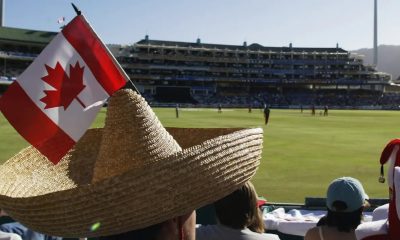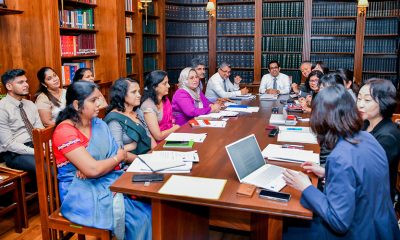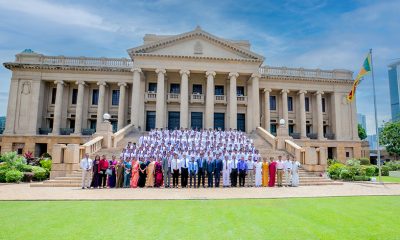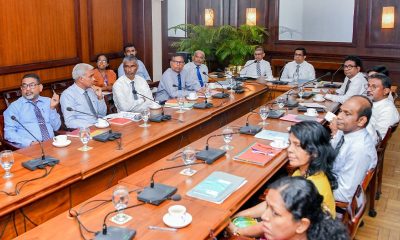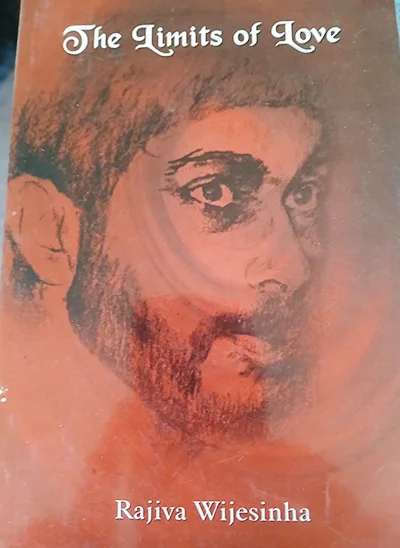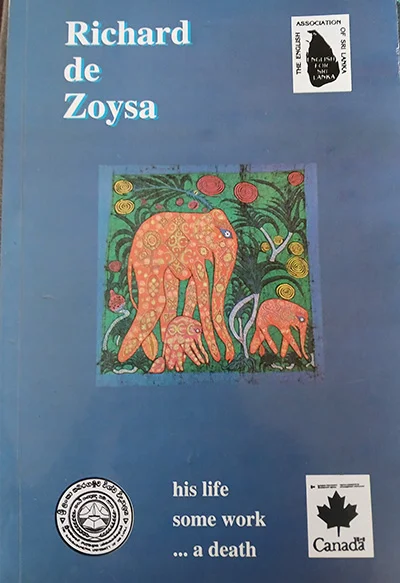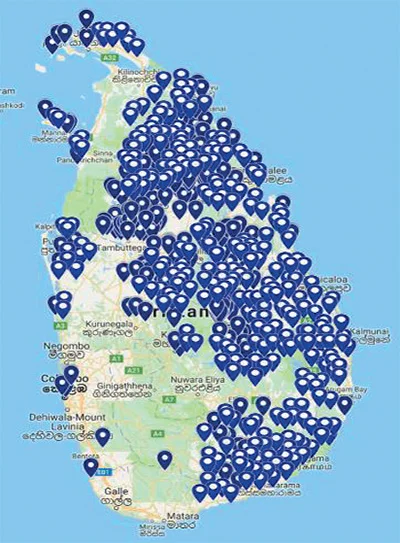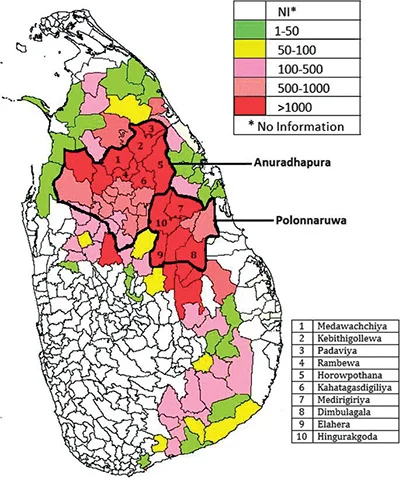Features
Govt, will have to show results to ensure closure
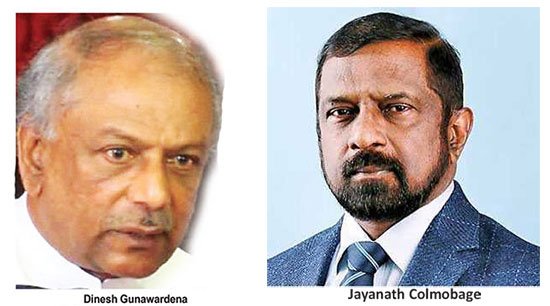
By Jehan Perera
There are two aspects to the process unfolding in the UN Human Rights Council in Geneva at the present time. The first is the outcome of the report of the UN High Commissioner for Human Rights, Michelle Bachelet which was released on January 27. The second will be the resolution of the UN Human Rights Council itself which is in the process of being finalized, and of which a draft is available. It is this latter document that will be debated in the final days of the 46th session of the UNHRC later this month. This will be the document that sets out the expectation of the UNHRC in terms of implementation by Sri Lanka.
So far it has been the report of the UN High Commissioner that has taken the centre stage of public attention in the country and being subjected to severe criticism by the government. Foreign Minister Dinesh Gunawardena has appealed to the member states of the UNHRC to reject the report and impending resolution as a “pure political move” against the country and asking that the issue be brought to a closure. The report arranges and sets out facts from a perspective that indicates that Sri Lanka is heading in the direction of contracting space for political freedom, weakening of checks and balances in governance and increased conflict between ethnic and religious communities. The picture painted is a bleak one, and includes incidents such as the detention of lawyer Hejaaz Hizbullah for nine months without formal charge.
However, even more serious than the opinion expressed about the negative direction that the country is taking are the recommendations given in the UN High Commissioner’s report. They are potentially calamitous ranging from freezing of assets, travel bans and targeted sanctions against public officials suspected of human rights violations and referral of such cases to international tribunals including the International Criminal Court and an invitation to individual countries to take action under the principle of universal jurisdiction.
DRAFT RESOLUTION
The government has strongly refuted the UN report as being biased and over critical of the state of governance in the country. Foreign Minister Dinesh Gunawaredena said, “Sri Lanka rejects the High Commissioner’s Report which has unjustifiably broadened its scope and mandate further, incorporating many issues of governance and matters that are essentially domestic for any self-respecting, sovereign country.” Over 20 countries have spoken against this report including China and Russia that possess veto powers in the UN Security Council which is the UN body authorized to permit international punitive actions. The problem is that the report opens the door to punitive actions by individual countries over which the countries that have pledged support to Sri Lanka will be unable to veto.
Another problem from the government’s perspective is that the UNHRC resolution had drawn inspiration from the report of the UN High Commissioner and has both observations and recommendations that are drawn from it. For instance, the draft resolution accepts the anticipated trajectory of Sri Lanka’s future political direction as presented by the UN High Commissioner’s report. There is a negative anticipation in this regard “over emerging trends over the past year, which represent clear early warning signs of a deteriorating human rights situation in Sri Lanka, including the accelerating militarization of civilian government functions, erosion of the independence of the judiciary and key institutions responsible for the promotion and protection of human rights, ongoing impunity and political obstruction of accountability for crimes and human rights violations in “emblematic cases”, policies that adversely affect the right to freedom of religion or belief, surveillance and intimidation of civil society and shrinking democratic space, arbitrary detentions, allegations of torture,” among others.
However, on the positive side the recommendations for action that are likely to be made in the UNHRC resolution on Sri Lanka are achievable ones on which action has already been taken in several instances. These are recommendations that the government can take on board and implement because they are meant to ensure a system of governance that is more just, law abiding and democratic for its multi ethnic, multi religious, multicultural and plural polity as described by Foreign Minister Dinesh Gunawardena at the UNHRC session in Geneva in February 2020.
The government is in a position to comply with most of recommendations that are in the draft resolution. These are as follows:
a.Support the work of the Office on Missing Persons and the Office for Reparations and allow them to proceed with interim relief measures for affected vulnerable families and resolve the many cases of enforced disappearances so that families of the disappeared can know their fate and whereabouts;
b.Set up a comprehensive accountability process for all violations and abuses of human rights committed in Sri Lanka, including those by the Liberation Tigers of Tamil Eelam, as highlighted in the OISL report of September 2015
c.Deal with the prevailing marginalisation and discrimination suffered by the Muslim community, and that the Government of Sri Lanka’s decision to mandate cremations for all those deceased from COVID-19 has prevented Muslims and members of other religions from practicing their own burial religious rites;
d.Ensure the prompt, thorough and impartial investigation and, if warranted, prosecution of all allegations of gross human rights violations and serious violations of international humanitarian law including for longstanding emblematic cases; and ensure reversal of non judicial closure of cases involving rights violation or major crimes;
e.Ensure the effective and independent functioning of the National Human Rights Commission, the Office on Missing Persons, and the Office for Reparations;
f.Ensure a safe and enabling environment in which civil society can operate free from hindrance, insecurity, and reprisals;
g.Review the Prevention of Terrorism Act and ensure that any legislation to combat terrorism complies with its international human rights and humanitarian law obligations;
h.Foster religious freedom and pluralism by promoting the ability of all religious communities to manifest their religion, and to contribute openly and on an equal footing to society;
i.Continue to cooperate with special procedures mandate holders, including responding formally to outstanding requests and obtain advice and technical assistance on implementing the above-mentioned steps.
ACTION TAKEN
It is to be noted that the government has already taken preliminary action with regard to several of the recommendations including those dealing with the Office on Missing Persons and Office for Reparations. It has also acted fully with regard to another one of the recommendation in the draft resolution. This is with regard to the issue of enforced cremation of Covid victims. Even though ten months late, the government’s decision to permit the burial of Covid victims in the face of strong internal opposition needs to be commended. It is likely to have a positive bearing on the discussions in the forthcoming discussions in the UNHRC, where the issue of enforced Covid cremation was a matter of censure. This decision will also contribute to make Muslims citizens of Sri Lanka feel that the government has finally responded to their deeply felt sentiments. Likewise, the government needs to be responsive to the Tamil citizens of Sri Lanka, their political aspirations and in particular whose grievances that continue to remain unaddressed eleven years after the end of the war.
It appears that the government is prepared to take action with regard to yet another one of the recommendations in the draft resolution. President Gotabaya Rajapaksa has expressed his desire to meet with the families of missing persons. This is a highly visible group of people who have been protesting for years that they want more information about their family members who went missing during the war and its immediate aftermath. Their unresolved grievances have been internationalized due to the inability and unwillingness of successive governments to offer a solution to this issue. Foreign Secretary Admiral Prof Jayanath Colombage has been quoted as saying that the president “wants to listen to them identify their actual grievances, rather than what politicians might say and give them a solution. It will happen very soon.”
The indications are that the resolution on Sri Lanka and its post-war reconciliation process will be presented by a group of likeminded countries with majority support in the UNHRC. The government is in a position to agree to most of these recommendations that advance the rights and privileges of Sri Lankan citizens, strengthen principles of good governance and are in keeping with the parameters of Sri Lankan sovereignty. The Lessons Learnt and Reconciliation Commission that the government appointed in 2010 in the face of a previous UNHRC resolution came up with a factual record and analysis that won both national and international recognition and some of its recommendations were adopted by the government. But more remains to be done. Instead of trying to mobilize countries in the UNHRC who themselves have questionable human rights track records to reject the resolution, the acceptance of those sections of the resolution that advance the quality of life of the Sri Lankan people and their human rights could take the country in a direction in which there will be no need for future resolutions by the UNHRC.
Features
International Women’s Day spurs re-visit of unresolved issues
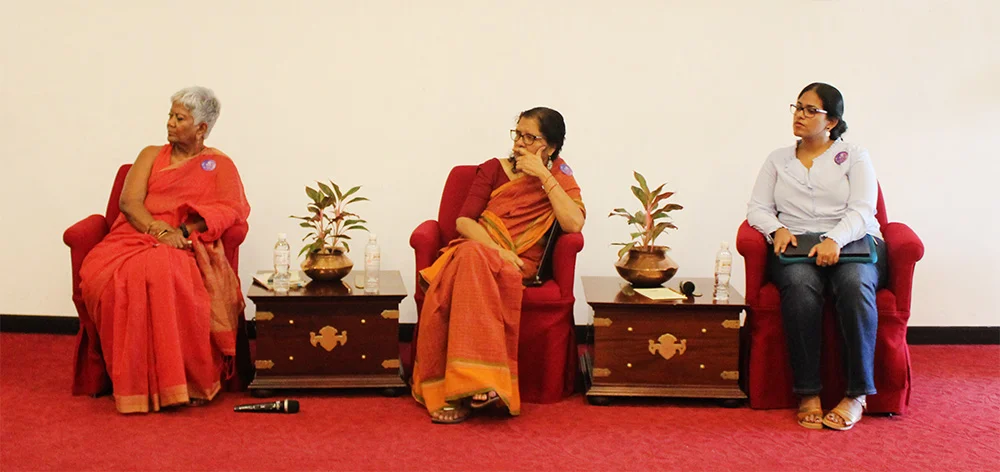
 ‘Bread and Peace’. This was a stirring demand taken up by Russia’s working women, we are told, in 1917; the year the world’s first proletarian revolution shook Russia and ushered in historic changes to the international political order. The demand continues to be profoundly important for the world to date.
‘Bread and Peace’. This was a stirring demand taken up by Russia’s working women, we are told, in 1917; the year the world’s first proletarian revolution shook Russia and ushered in historic changes to the international political order. The demand continues to be profoundly important for the world to date.
International Women’s Day (IWD) is continuing to be celebrated the world over, come March, but in Sri Lanka very little progress has been achieved over the years by way of women’s empowerment, despite Sri Lanka being a signatory to the UN Convention on the Elimination of all Forms of Discrimination Against Women (CEDAW) and other pieces of global and local legislation that promise a better lot for women.
The lingering problems in this connection were disturbingly underscored recently by the rape-assault on a female doctor within her consultation chamber at a prominent hospital in Sri Lanka’s North Central Province; to cite just one recent instance of women’s unresolved vulnerability and powerlessness.
The Bandaranaike Centre for International Studies, Colombo (BCIS) came to the forefront in taking up the above and other questions of relevance to women at a forum conducted at its auditorium on March 7th, in view of IWD. The program was organized by the library team at the BCIS, under the guidance of the BCIS Executive Director Priyanthi Fernando.
It was heartening to note that the event was widely attended by schoolchildren on the invitation of the BCIS, besides members of the public, considering that the awareness among the young needs to be consistently heightened and broadened on the principal issue of gender justice. Hopefully, going forward, the young would champion the cause of women’s rights having gained by the insights which have been surfaced by forums such as that conducted by the BCIS.
The panelists at the BCIS forum comprised Kumudini Samuel of the Women and Media Collective, a local organization which is in the forefront of taking up women’s issues, and Raaya Gomez, an Attorney-at-Law, engaged in women’s rights advocacy. Together they gave the audience much to think about on what needs to be done in the field of gender justice and linked questions.
The currently raging wars and conflicts worldwide ought to underscore as never before, the yet to be substantively addressed vulnerability of women and children and the absolute need for their consistent empowerment. It is plain to see that in the Gaza, for example, it is women and children who are put through the most horrendous suffering.
Yet, women are the sole care-givers and veritable bread winners of their families in particularly times of turmoil. Their suffering and labour go unappreciated and unquantified and this has been so right through history. Conventional economics makes no mention of the contribution of women towards a country’s GDP through their unrecorded labour and, among other things, this glaring wrong needs to be righted.
While pointing to the need for ‘Bread and Peace’ and their continuing relevance, Kumudini Samuel made an elaborate presentation on the women’s struggle for justice and equality in Sri Lanka over the decades. Besides being the first country to endow women with the right to vote in South Asia, Sri Lanka has been in the forefront of the struggle for the achievement of women’s rights in the world. Solid proof of this was given by Ms. Samuel via her presentation.
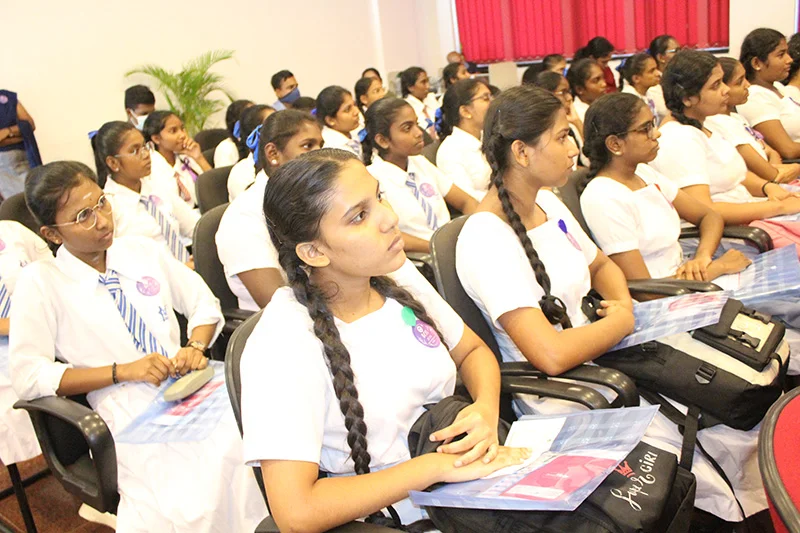
Schoolchildren at the knowledge-sharing session.
The presenter did right by pointing to the seventies and eighties decades in Sri Lanka as being particularly notable from the viewpoint of women’s advocacy for justice. For those were decades when the country’s economy was unprecedentedly opened or liberalized, thus opening the floodgates to women’s increasing exploitation and disempowerment by the ‘captains of business’ in the Free Trade Zones and other locations where labour rights tend to be neglected.
Besides, those decades witnessed the explosive emergence of the North-East war and the JVP’s 1987-’89 uprising, for example, which led to power abuse by the state and atrocities by militant organizations, requiring women’s organizations to take up the cause of ethnic peace and connected questions, such as vast scale killings and disappearances.
However, the presenter was clear on the point that currently Sri Lanka is lagging behind badly on the matter of women’s empowerment. For example, women’s representation currently in local councils, provincial councils and parliament is appallingly negligible. In the case of parliament, in 2024 women’s representation was just 9.8 %. Besides, one in four local women have experienced sexual and physical violence since the age of fifteen. All such issues and more are proof of women’s enduring powerlessness.
Raaya Gomez, among other things, dealt at some length on how Sri Lanka is at present interacting with and responding to international bodies, such as CEDAW, that are charged with monitoring the country’s adherence to international conventions laying out the state’s obligations and duties towards women.
This year, we were told, the Sri Lankan government submitted 11 reports to CEDAW in Geneva on issues raised by the latter with the state. Prominent among these issues are continuing language-related difficulties faced by minority group Lankan women. Also coming to the fore is the matter of online harassment of women, now on the ascendant, and the growing need for state intervention to rectify these ills.
It was pointed out by the presenter that overall what needs to be fulfilled by Sri Lanka is the implementation of measures that contribute towards the substantive equality of women. In other words, social conditions that lead to the vulnerability and disempowerment of women need to be effectively managed.
Moreover, it was pointed out by Gomez that civil society in Sri Lanka comes by the opportunity to intervene for women’s empowerment very substantively when issues relating to the Lankan state’s obligations under CEDAW are taken up in Geneva, usually in February.
Accordingly, some Lankan civil society organizations were present at this year’s CEDAW sessions and they presented to the body 11 ‘shadow reports’ in response to those which were submitted by the state. In their documents these civil society groups highlighted outstanding issues relating to women and pointed out as to how the Lankan state could improve its track record on this score. All in all, civil society responses amount to putting the record straight to the international community on how successful or unsuccessful the state is in adhering to its commitments under CEDAW.
Thus, the BCIS forum helped considerably in throwing much needed light on the situation of Lankan women. Evidently, the state is yet to accelerate the women’s empowerment process. Governments of Sri Lanka and their wider publics should ideally come to the realization that empowered women are really an asset to the country; they contribute immeasurably towards national growth by availing of their rights and by adding to wealth creation as empowered, equal citizens.
Features
Richard de Zoysa at 67
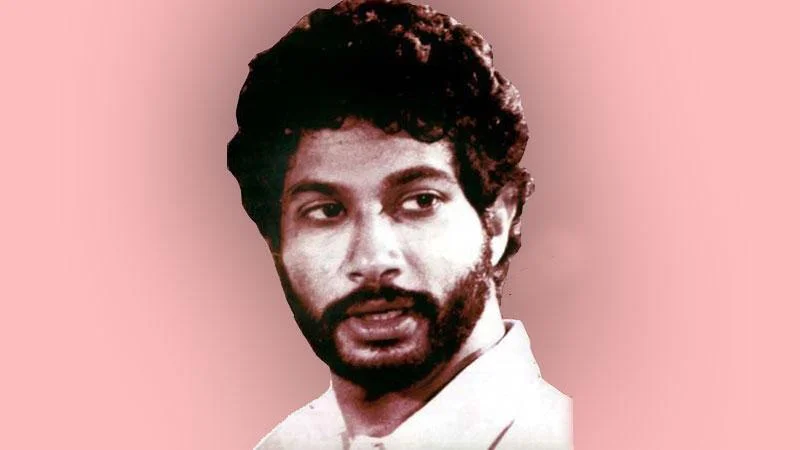
by Prof. Rajiva Wijesinha
Today would have been Richard de Zoysa’s 67th birthday. That almost seems a contradiction in terms, for one could not, in those distant days of his exuberant youth, have thought of him as ever getting old. His death, when he was not quite 32, has fixed him forever, in the minds of those who knew and loved him, as exuding youthful energy.
It was 35 years ago that he was abducted and killed, and I fear his memory had begun to fade in the public mind. So we have to be thankful to Asoka Handagama and Swarna Mallawarachchi for bringing him to life again through the film about his mother. This was I think more because of Swarna, for I still recall her coming to see me way back in 2014 – August 28th it was, for my father was dying, though he was still mindful enough to ask me how my actress was after I had left him that afternoon to speak to her downstairs – to talk about her plans for a film about Manorani.
His friends have in general criticised the film, and I too wonder as to why she and the Director did not talk to more of his friends before they embarked on the enterprise. But perhaps recreating actual situations was not their purpose, or rather was not his, and that is understandable when one has a particular vision of one’s subject matter.
After listening to and reading the responses of his friends, I am not too keen to see the film, though I suspect I will do so at some stage. Certainly, I can understand the anger at what is seen as the portrayal of a drunkard, for this Manorani never to my knowledge was. But I think it’s absurd to claim there was never alcohol in the house, for there was, and Manorani did join in with us to have a drink, though she never drank to excess. Richard and I did, I fear, though not at his house, more at mine or at his regular haunt, the Art Centre Club.
I am sorry too that the ending of the film suggests that the murder was the responsibility of just its perpetrators, for there is no doubt that it was planned higher up. I myself have always thought it was Ranjan Wijeratne, who was primarily responsible, though I have no doubt that Premadasa also had been told – indeed Manorani told me that he had turned on Ranjan and asked why he had not been told who exactly Richard was.
But all that is hearsay, and it is not likely that we shall ever be able to find out exactly what happened. And otherwise it seems to me from what I have read, and in particular from one still I have seen (reproduced here), illustrating the bond between Richard and his mother, the film captures two vital factors, the extraordinary closeness of mother and son, and the overwhelming grief that Manorani felt over his death.
Despite this she fought for justice, and she also made it clear that she fought for justice not only for her son, but for all those whose loved ones had suffered in the reign of terror unleashed by JR’s government, which continued in Premadasa’s first fifteen months.
I have been surprised, when I was interviewed by journalists, in print and the electronic media, that none of them remembered Ananda Sunil, who had been taken away by policemen eight years earlier, when JR issued orders that his destructive referendum had to be won at all costs. Manorani told me she had met Ananda Sunil’s widow, who had complained, but had then gone silent, because it seemed the lives of her children had been threatened.
Manorani told me that she was comparatively lucky. She had seen her son’s body, which brought some closure, which the other women had not obtained. She had no other children, and she cared nothing for any threats against her own life for, as she said repeatedly, her life had lost its meaning with Zoysa’s death and she had no desire to live on.
I am thankful then that the film was made, and I hope it serves to renew Richard’s memory, and Manorani’s, and to draw attention to his extraordinary life, and hers both before and after his death. And I cannot be critical about the fact that so much about his life was left out, for a film about his mother’s response to his death could not go back to the past.
But it surprised me that the journalists did not know about his own past, his genius as an actor, his skill as a writer. All of them interviewed me for ages, for they were fascinated at what he had achieved in other spheres in his short life. Even though not much of this appeared in what they published or showed, I hope enough emerged for those interested in Richard to find out more about his life, and to read some of his poetry.
A few months after he died – I had been away and came back only six months later – I published a collection of his poetry, and then a few years later, having found more, republished them with two essays, one about our friendship, one about the political background to his death. And the last issue of the New Lankan Review, which he and I had begun together in 1983 in the tutory we had set up after we were both sacked from S. Thomas’, was dedicated to him. It included a striking poem by Jean Arasanayagam who captured movingly the contrast between his genius and the dull viciousness of his killers.
After those initial memorials to his life and his impact, I started working on a novel based on our friendship. I worked on this when I had a stint at the Rockefeller Centre in Bellagio in 1999, but I was not satisfied, and I worked on it for a few years more, before finally publishing the book in 2005. It was called The Limits of Love and formed the last book in my Terrorist Trilogy, the first book of which, Acts of Faith, had been written with his support, after the July 1983 riots. That was translated into Italian, as Atti di Fedi, and came out in 2006 in Milan.
The Limits of Love
did not receive much publicity, and soon afterwards I was asked to head the Peace Secretariat, and after that I wrote no more fiction. But when Godage & Bros had published several of my non-fiction works in the period after I was excluded from public life, I asked them to republish Acts of Faith, which they did, and that still remains in print. They also republished in 2020 Servants, my novel that won the Gratiaen Prize for 1995.
I thought then that it would be a good idea to republish The Limits of Love, and was delighted that Neptune agreed to do this, after the success of my latest political history, Ranil Wickremesinghe and the emasculation of the United National Party. I thought initially of bringing the book out on the anniversary of Richard’s death, but I had lost my soft copy and reproducing the text took some time. And today being Poya I could not launch the book on his birthday.
It will be launched on March 31st, when Channa Daswatte will be free to speak, for I recalled that 20 years ago my aunt Ena told me that he had admired the book. I think he understood it, which may not have been the case with some of Richard’s friends and relations, for this too is fiction, and the Richard’s character shares traits of others, including myself. The narrator, the Rajiv’s character, I should add is not myself, though there are similarities. He is developed from a character who appeared in both Acts of Faith and Days of Despair, though under another name in those books. Rajiv in the latter is an Indian Prime Minister, though that novel, written after the Indo-Lanka Accord, is too emotional to be easily read.
Manorani hardly figures in The Limits of Love. A Ranjan Wijesinghe does, and also a Ronnie Gooneratne, but of more interest doubtless will be Ranil and Anil, two rival Ministers under President Dicky, both of whom die towards the end of the book. Neither, I should add, bears the slightest resemblance to Ranil Wickremesinghe. His acolytes may try to trace elements of him in one or other of the characters, for I remember being told that Lalith Athulathmudali’s reaction to Acts of Faith was indignation that he had not appeared in it.
Fiction has, I hope, the capacity to bring history to life, and the book should be read as fiction. Doubtless there will be criticism of the characterisation, and of course efforts to relate this to real people, but I hope this will not detract from the spirit of the story, and the depiction of the subtlety of political motives as well as relationships.
The novel is intended to heighten understanding of a strange period in our history, when society was much less fragmented than it is today, when links between people were based on blood as much as on shared interests. But I hope that in addition it will raise awareness of the character of the ebullient hero who was abducted and killed 35 years ago.
The film has roused interest in his life, though through a focus on his death. The novel will I hope heighten awareness of his brilliance and the range of his activity in all too short a life.
Features
SL Navy helping save kidneys
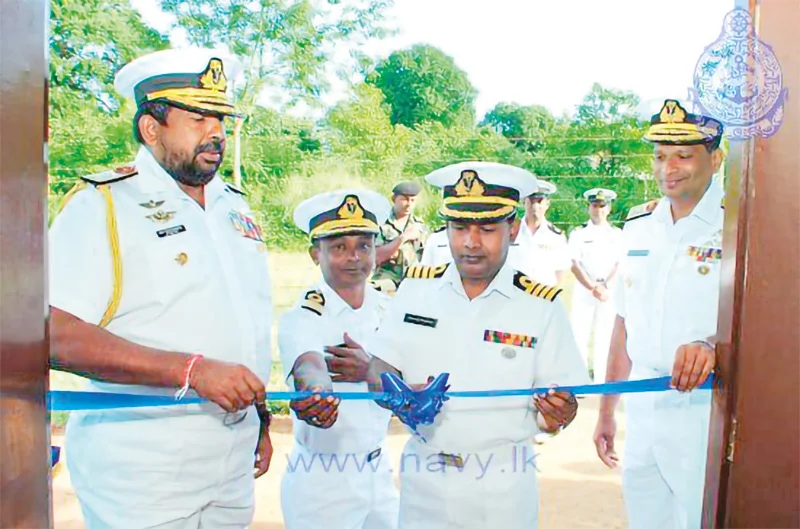
By Admiral Ravindra C Wijegunaratne
WV, RWP& Bar, RSP, VSV, USP,
NI (M) (Pakistan), ndc, psn, Bsc (Hons) (War Studies) (Karachi) MPhil (Madras)
Former Navy Commander and Former Chief of Defense Staff
Former Chairman, Trincomalee Petroleum Terminals Ltd
Former Managing Director Ceylon Petroleum Corporation
Former High Commissioner to Pakistan
Navy’s efforts to eradicate Chronic Kidney Disease (CKD) from North Central and North Western Provinces:
• Navy’s homegrown technology provides more than Ten million litres of clean drinking / cooking water to the public free of charge.
• Small project Navy started on 22nd December 2015 providing great results today.
• 1086 Reverse Osmosis (RO) Water purification plants installed to date – each plant producing 10,000 litres of clean drinking water – better quantity than bottled water.
• Project continued for 10 years under seven Navy Commanders highlights the importance of “INSTITUTIONALIZING” a worthy project.
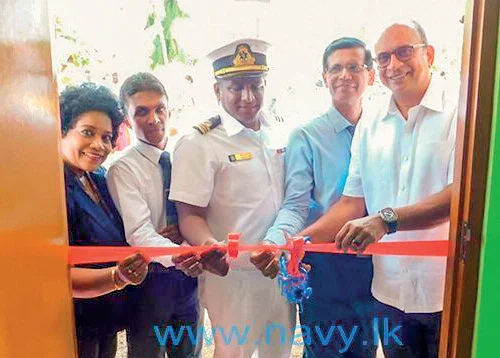 What you see on the map of Sri Lanka (Map 1) are RO water purification plants installed by SLN.SLN is famous for its improvisations and innovations in fighting LTTE terrorists out at sea. The Research and Development Institute of SLN started to use its knowledge and expertise for “Nation Building” when conflict was over in May 2009. On request of the Navy Commander, R and D unit of SLN, under able command of Commander (then) MCP Dissanayake, an Indian trained Marine Engineer, embarked on a programme to build a low- cost RO plant.
What you see on the map of Sri Lanka (Map 1) are RO water purification plants installed by SLN.SLN is famous for its improvisations and innovations in fighting LTTE terrorists out at sea. The Research and Development Institute of SLN started to use its knowledge and expertise for “Nation Building” when conflict was over in May 2009. On request of the Navy Commander, R and D unit of SLN, under able command of Commander (then) MCP Dissanayake, an Indian trained Marine Engineer, embarked on a programme to build a low- cost RO plant.
The Chronic Kidney Disease was spreading in North Central Province like a “wildfire “in 2015, mainly due to consumption of contaminated water. To curb the situation, providing clean drinking and cooking water to the public was the need of the hour.
The Navy had a non-public fund known as “Naval Social Responsibility Fund “(NSR) started by former Navy Commander Admiral DWAS Dissanayake in 2010, to which all officers and sailors contributed thirty rupees (Rs 30) each month. This money was used to manufacture another project- manufacturing medicine infusion pumps for Thalassemia patients. Thalassemia Medicine Infusion pumps manufactured by SLN R and D Unit. With an appropriately 50,000 strong Navy, this fund used to gain approximately Rupees 1.5 million each month- sufficient funds to start RO water purification plant project.
Studies on the spreading of CKD, it was very clear of danger to the people of North central and North Western provinces, especially among farmers, in this rice producing province. The detailed studies on this deadly disease by a team led by Medical experts produced the above map (see Map 2) indicating clear and present danger. Humble farmers in “the Rice Bowl” of Sri Lanka become victims of CDK and suffer for years with frequent Dialysis Treatments at hospitals and becoming very weak and unable to work in their fields.
- Map 1
- Map 2
The Navy took ten years to complete the project, under seven Navy Commanders, namely Admiral Ravi Wijegunaratne, Admiral Travis Sinniah, Admiral Sirimevan Ranasinghe, Admiral Piyal De Silva, Admiral Nishantha Ulugethenna, Admiral Priyantha Perera, present Navy Commander Kanchana Banagoda. Total cost of the project was approximately Rs. 1.260 million. Main contributors to the project were the Presidential Task Force to Eradicate CDK (under the then President Mithripala Sirisena), Naval Social Responsibility Fund, MTV Gammedda, individual local and foreign donors and various organisations. Their contributions are for a very worthy cause to save the lives of innocent people.
The Navy’s untiring effort showed the World what they are capable of. The Navy is a silent force. What they do out at sea has seen only a few. This great effort by the Navy was also noticed by few but appreciated by humble people who are benefited every day to be away from deadly CKD. The Reverse Osmosis process required power. Each plant consumes approximately Rs 11,500 worth power from the main grid monthly. This amount brought down to an affordable Rs 250 per month electricity bill by fixing solar panels to RO plant building roofs. Another project to fix medical RO plants to hospitals having Dialysis machines. SLN produced fifty medical RO plants and distributed them among hospitals with Dialysis Machines. Cost for each unit was Rs 1.5 million, where an imported plant would have cost 13 million rupees each. Commodore (E) MCP Dissanayake won the prize for the best research paper in KDU international Research Conference 2021 for his research paper to enhance RO plant recovery from 50% to 75%. He will start this modification to RO plants soon making them more efficient. Clean drinking water is precious for mankind.
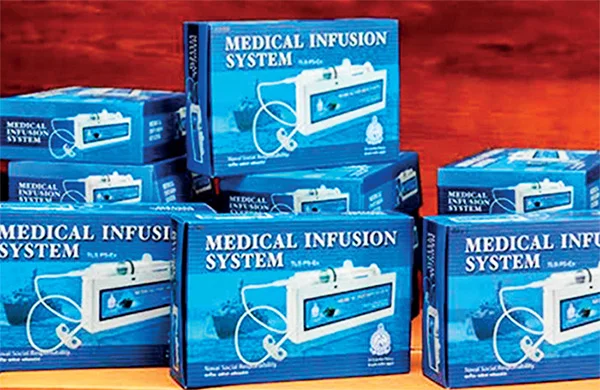
Thalassemia Medicine Infusion pumps manufactured by SLN R and D Unit
The Navy has realised it very well. In our history, King Dutugemunu (regained from 161 BC to 137 BC), united the country after 40 years and developed agriculture and Buddhism. But King Dutugemunu was never considered a god or deified. However, King Mahasen (277 to 304 AD) who built more than 16 major tanks was considered a god after building the Minneriya tank.
The people of the North Central Province are grateful to the Navy for providing them with clean drinking and cooking water free of charge daily. That gratitude is for saving them and their children from deadly CKD.
Well done Our Navy! Bravo Zulu!
-

 News5 days ago
News5 days agoPrivate tuition, etc., for O/L students suspended until the end of exam
-
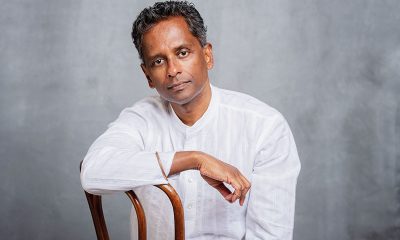
 Features6 days ago
Features6 days agoShyam Selvadurai and his exploration of Yasodhara’s story
-

 Editorial4 days ago
Editorial4 days agoRanil roasted in London
-
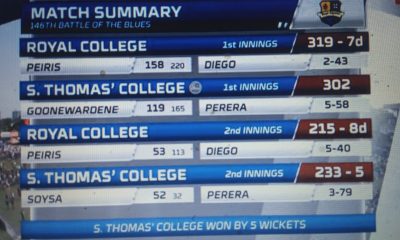
 Latest News5 days ago
Latest News5 days agoS. Thomas’ beat Royal by five wickets in the 146th Battle of the Blues
-
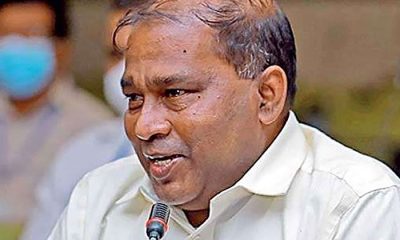
 News5 days ago
News5 days agoTeachers’ union calls for action against late-night WhatsApp homework
-

 Editorial6 days ago
Editorial6 days agoHeroes and villains
-
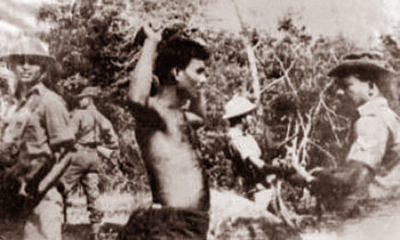
 Features4 days ago
Features4 days agoThe JVP insurrection of 1971 as I saw it as GA Ampara
-

 Editorial5 days ago
Editorial5 days agoPolice looking for their own head


